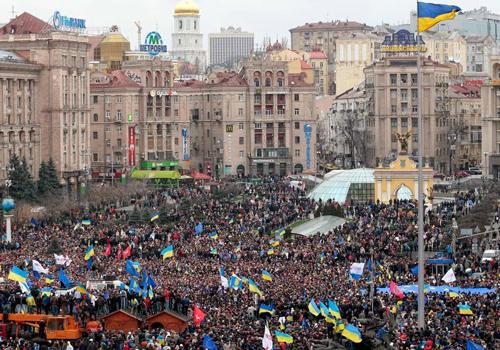Faculty Member Kachuyevski, Expert on Ukraine, Explains Country’s Unrest

On Feb. 26, Dr. Angela Kachuyevski, assistant professor of political science and an expert on Ukraine and Russia, provided insight into the Euromaidan revolution in Ukraine.
Describing Ukraine’s centuries-old, complex history, Kachuyevski notes “Even its name, Ukrayina, means ‘on the edge,’” reflecting Ukraine’s geographic, cultural, and political location between central Europe and Russia.
Protesters filled Kiev’s Independence Square, known as Maidan, in late November when then-president Viktor Yanukovych abruptly switched course. Instead of signing the Association Agreement that had been years in the making and meant to align Ukraine with the European Union, Yanukovych opted to explore the possibility of greater economic cooperation with Russia, securing a large loan from Moscow to ease economic crisis in Ukraine. This surprising move resulted in widespread peaceful protests that over months escalated into civil unrest, demands for an end to corruption, and calls for the resignation of the entire government.
Events took a dramatic turn Feb. 18-20 when government forces opened fire on demonstrators, resulting in the deaths of nearly 100 people. Soon after reaching a political settlement on Feb. 21, Yanukovych fled the capital and remains a fugitive due to the warrant issued for his arrest on Feb. 24.
“This is not an ethnic conflict,” emphasizes Kachuyevski. “The violence is from a repressive government using force against the people.”
Even as a new leader prepares to take the helm and signs of separatism erupt in Crimea and other parts of the country, Kachuyevski hones in on the key issue of the Euromaidan revolution: Ukraine’s future in Europe and its relationship with Russia.


